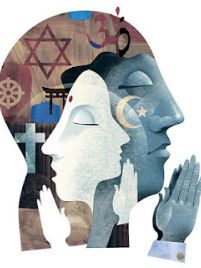One But Different…
By Sutapa Das | Мар 30, 2012

The Bhagavad-gita offers an interesting perspective on world religions. It explains how the various traditions all stem from a divine source, and all offer the potential of spiritual elevation. The differences between them are primarily in culture, ritual and expression, while the central principles remain universal. Since the same message was taught in different times, places and circumstances, the externals had to be adapted – essentially, old wine in new bottles. While many can resonate with such an idea, there are also students and practitioners who would find such a stance difficult to digest. How can we reconcile fundamental differences on philosophical points? How can we overlook striking contradictions in the various historical and cultural accounts? Could this be a naive ‘new age’ attempt to avoid confrontation and create ‘peace, love and unity’? Without a more detailed explanation, some may say it’s a case of politically correct, but theologically wrong. How do we rationalise differences between paths that supposedly stem from the same source?
Context – religious scriptures and statements must be understood in relation to the entire body of teachings, and also with due consideration of the social context within which they were presented. ‘Differences’ may be perceived because we adopt a one-dimensional approach; taking statements simplistically, without understanding the context, purpose and background behind them.
Emphasis – different traditions and teachers may stress different things. Our spiritual evolution requires complete refinement of character and consciousness, and different traditions may well work on different aspects of this. Thus, they may emphasise different points, but such ‘differences’ are a part of a broader harmony.
Interpretation – we understand the divine traditions through the representatives of that faith. While this is perfectly natural, the teachers do have to prove themselves as transparent via mediums, free from the propensity to insert their own ideas. ‘Differences’ may surface because we mistake human opinions as gospel truths.















